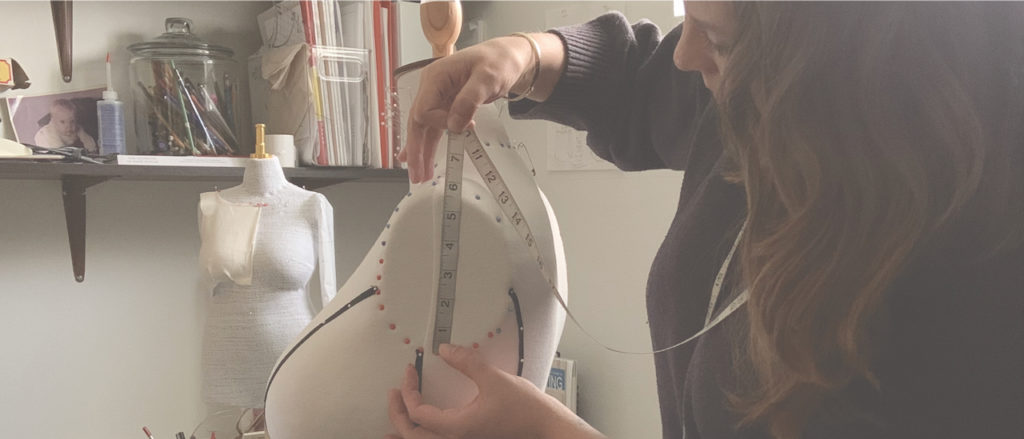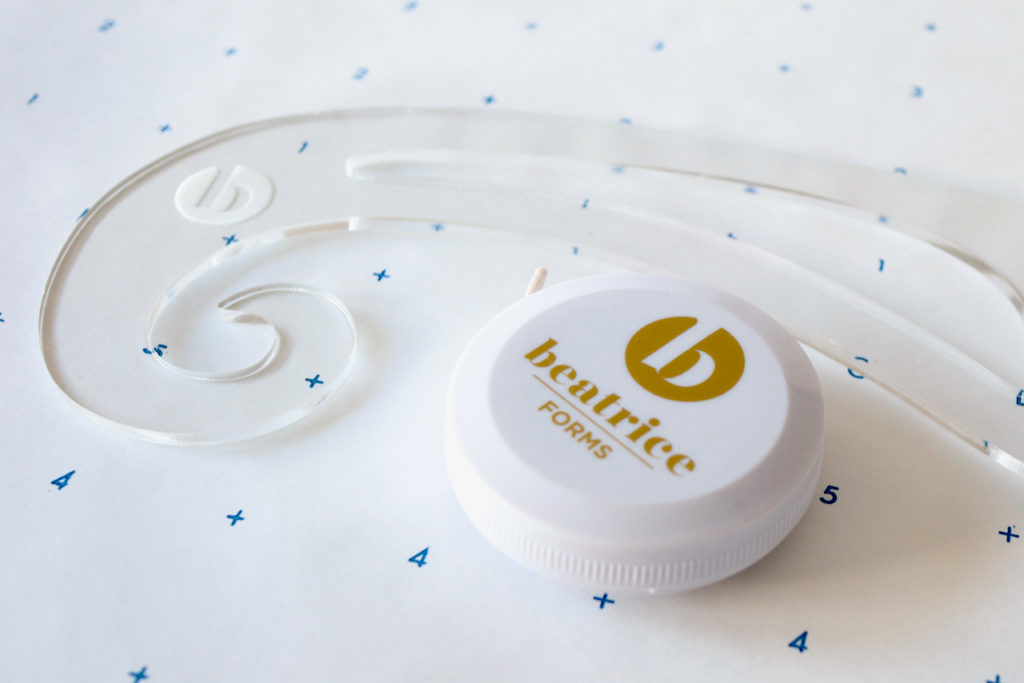
If you’re new to draping or are just curious, one of the first questions you might be asking yourself is “what supplies and tools do I need to get started?”
Well it just so happens I’ve thought A LOT about this question. After teaching draping to home sewists first in-person and now online through the pandemic, I feel like we’ve really honed our course materials list down to the absolute essentials. I’m sharing this list with you to help you gather your supplies for your first draping adventure!
Stuff you already have
I’m assuming if you’re reading this post, you probably already like to sew garments! Lucky for you, this means you already have many of the basics needed for draping. Let’s start here!
#1 Sewing machine & basic sewing supplies. You’ll be testing your draped patterns by sewing up test garments.
#2 Pins. I like to use both flat head pins and ball headed pins. The flat heads are good for pinning semi-permanent twill tape markings on the form (like center front, back, bust, waist, etc.) without sticking up and getting caught on things. The ball headed pins are easier to grip when pinning your muslin drapes. If working on half-scale, I like using shorter length pins (e.g. size 17). Nice to have: a wrist pin cushion to keep those pins handy while you work.
#3 Measuring tape. Any kind will do but the retractable ones can also be used as a plumb bob for aligning vertical reference lines with gravity.
#4 Scissors. You will be cutting fabric and paper so you’ll need both kinds of scissors.
#5 Pencils and pens. Select a soft leaded non-mechanical pencil to mark your muslin. Additionally, having a few different colored pens or pencils available to mark successive adjustments can help you keep track of changes.
#6 Tracing wheel & wax tracing paper. Used to transfer your designs from the muslin drape to paper.

Stuff you might need to add to your arsenal
Some of these tools you may already have or can borrow. Materials like muslin and twill tape are generally good things to have on hand for other sewing and craft projects.
#7 Pinnable dress form. You can drape on almost any dress form as long as its surface is “pinnable” – meaning you can easily insert pins to hold up fabric, especially along center front and back and along key places like the bust and waist. Duct/paper tape forms and adjustable Dritz “dial-a-form” dress forms are unsuitable for this reason.
Full-sized or half-scale forms are both great for draping. Full-sized has the advance of being multi-use (fitting, styling, altering, etc.) On the other hand, half-scale has the advantages of requiring just 1/4 of the materials and being easier and faster to drape on (scaling up your draped patterns to full-size is pretty easy with just a cheap scanner/copier…I’ll share how to do this in a future post.)
#8 High quality muslin. Muslin with a softer hand will be easier to drape. Although I don’t generally buy fabric from Joann, I do like their premium quality muslin. Really any high quality muslin you can source will be fine. Using an inexpensive, stable light/medium cotton from your stash can also work too, just be mindful that prints and dark colors make it hard to mark when truing and writing notes. And I would definitely buy extra if possible for do overs – you can always use extras for later projects.
#9 Rulers. You need all the same rulers you’d normally use for altering patterns: a gridded sewing ruler, a french curve, and an L-square. A hip curve can also be useful for full-scale drafting.
#10 1/8″ or 1/4″ twill tape. Used for form marking. Black is best but other colors will work too. For full-scale forms, you could even get away with 3/8″ if needed.

Completely optional
Draping tape. This narrow, adhesive-backed tape is useful for marking style lines on the fly. Just be careful not to gum up your pins by pinning through it.
Rotary cutter and cutting mat. Useful for sewing test garments. I also like the cutting mat for checking right angles when pattern truing.
It’s amazing how familiar many of these tools and supplies may already be for you. I think that home sewists tend to put draping on a pedestal, only for professionals, but from what I’ve seen, it’s the exact opposite.
Give yourself permission to play with fabric, use your eyes and hands as your guide, and you’ll be amazed what you’ll learn! Indulge a little, you won’t regret it 😉

(p.s. If you’re having trouble sourcing these supplies, check out our Draping Starter Kit!)